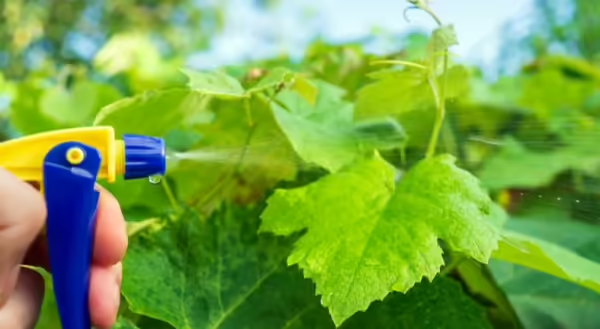
Farmers are at the forefront of the fight against weeds. When livelihoods are on the line and herbicide resistance continues to be a growing problem, growers may want to consider a multi-faceted approach to weed control. This is where integrated weed management becomes invaluable for farmers.
Integrated weed management (IWM) is a comprehensive and holistic approach to weed management that includes many different weed control tactics. IWM uses a combination of cultural, mechanical, biological, and chemical methods to keep weeds under control. Some of these methods are going back to the basics of farming, while others utilize new and emerging technologies.
An overreliance on herbicides in recent history has led to the emergence of many resistant populations of weeds that have become nearly impossible for growers to manage. IWM focuses on depleting the reservoir of weed seeds present in soils — the “seed bank”— by eliminating weeds before they sprout or go to seed so there are no more “withdrawals” and “deposits” taking place, effectively closing the weed seed bank. The overarching purpose of IWM is to integrate multiple control methods into our weed management strategy to address the issue of herbicide resistance and effectively manage weed populations.
Growers have many options when it comes to integrated weed management. Here are some options to keep in your IWM toolbox:
Prevention:
Preventative weed control focuses on keeping weeds out of a field or preventing their spread between fields. This includes practices like cleaning equipment to ensure new weed seeds aren’t introduced to fields, avoiding manure that is contaminated with weed seeds, and preventing weed growth in nearby areas like ditches and fencerows.
Cultural control:
Cultural control methods are those that create field conditions that are unfavorable for weeds to grow in from the start and give crops a competitive advantage. This includes practices like planting cover crops, crop rotation, and selecting the right varieties.
Mechanical control:
Mechanical control methods are those that physically remove weeds. This includes practices like hand-pulling, tillage, mowing, and burning. With physical control methods it is essential that they are used before weeds go to seed.
Biological control:
Biological control methods are those that use living organisms to prevent weeds. This includes practices like using natural enemies like insects or pathogens to control weeds. Biological control is the least utilized control method but is a growing research area.
Chemical control:
Chemical control methods are those that we are most familiar with and include the use of herbicides. Herbicides will always be an integral part of IWM strategies, but there are some management considerations that growers should be mindful of. Scouting often and early is essential to ensuring herbicides are applied at the correct time when they will be most effective. It is also important to use tank mixes that include herbicides with multiple sites of action and to apply herbicides at the rate recommended on the label.
Implementing IWM requires growers to reframe how they think about weed control. IWM is a proactive, holistic approach that may be very different from how growers have thought about weed control in the past. However, with the growing threat of herbicide resistance, growers should continue to learn and consider new strategies for managing weeds.
“By incorporating scouting and combining multiple methods of control, integrated weed management makes for a robust weed control system that has numerous benefits – controlling weeds, reducing the weed soil seed bank, making crops more competitive, and reducing herbicide resistance evolution,” says University of Illinois Extension Commercial Agriculture Educator, Kathryn Seebruck.
Growers who purchase and use herbicides must have the appropriate license to do so and should stay up to date on best management practices when using herbicides. More information about pesticide training and testing can be found at extension.illinois.edu/psep.
Emily Hansen is a Commercial Agriculture Educator with University of Illinois Extension, serving Bureau, LaSalle, Marshall, and Putnam counties. Emily provides research-based educational programs that empower growers to make sustainable choices on their farms.
Harker, K. N., & O’Donovan, J. T. (2013). Recent Weed Control, Weed Management, and Integrated Weed Management. Weed Technology, 27(1), 1–11. doi:10.1614/WT-D-12-00109.1
Merfield, C. N. (2023). Chapter 2—Integrated weed management in organic farming. In Sarathchandran, U. M.r., S. Thomas, & D. K. Meena (Eds.), Organic Farming (Second Edition) (pp. 31–109). Woodhead Publishing. https://doi.org/10.1016/B978-0-323-99145-2.00004-5
SARE Outreach, Mohler, C. L., Teasdale, J. R., & DiTommaso, A. (2021). Manage Weeds on Your Farm. https://www.sare.org/resources/manage-weeds-on-your-farm/
Schonbeck, M. 2007. Beating the weeds with low-cost cover crops, intercropping and steel. The Virginia Biological Farmer 30:7-8.